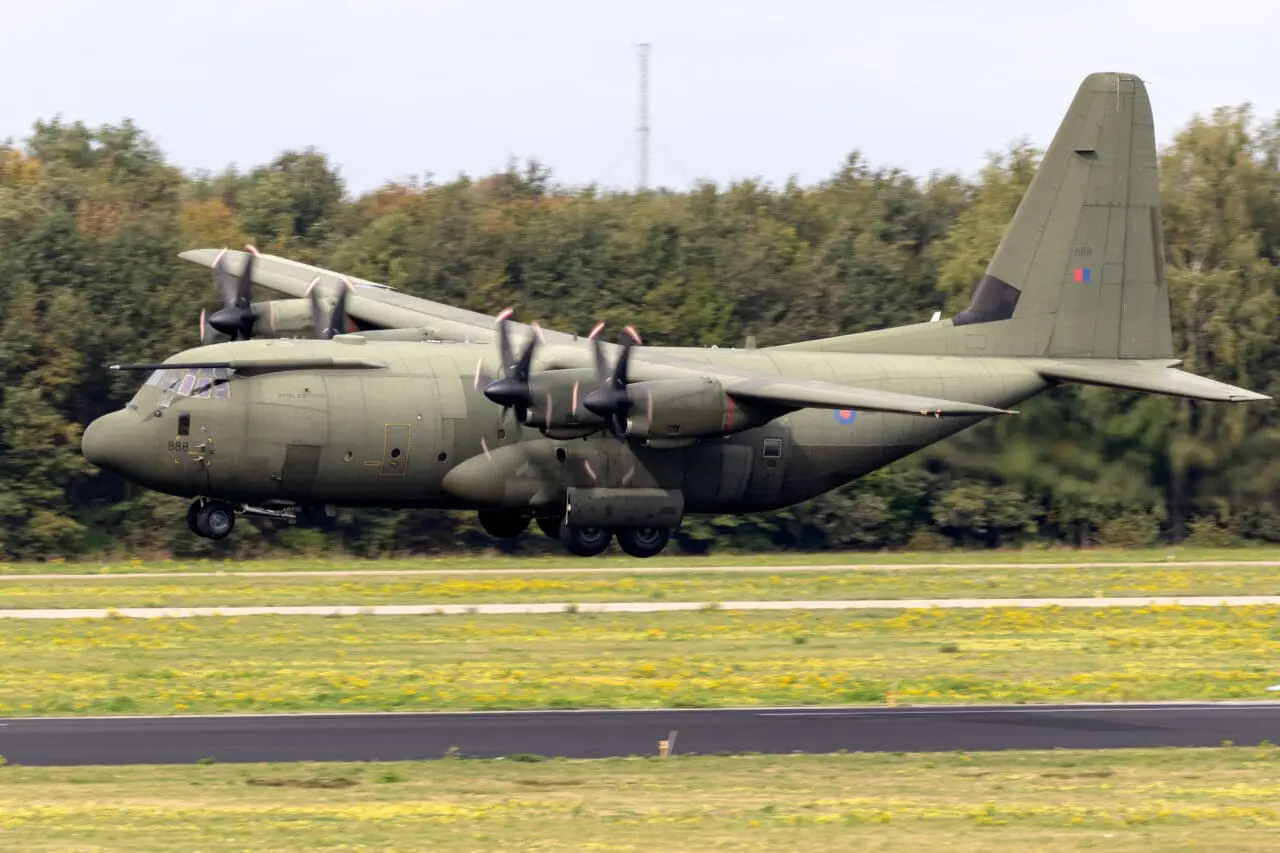

Aviation tracker website Flightradar24 has reported that the RAF plane flight carrying Queen Elizabeth II’s coffin from Edinburgh to London on September 13 was the most-tracked flight ever.
It was reported that 5 million people tracked the RAF flight, which beats the previous record of 2.9 million people who tracked the recent flight to Taiwan of US House Speaker Nancy Pelosi.
Sweden-based Flightradar24 reported in a blog post that 4.79 million people viewed the flight of the aircraft containing the Queen’s coffin from Edinburgh to RAF Northolt near London across Flightradar24 web and mobile app services. Although 5 million people could track the flight, an unprecedented 6 million people attempted to click on the flight, and a total of 76.2 million requests relating to this flight were processed by Flightradar24. These ‘requests’ were actions such as a user clicking on the flight icon, clicking on the aircraft information in the left side box, or adjusting settings.
A further 296,000 are reported to have followed the flight via YouTube live stream.
Flight24 reports that “Queen Elizabeth II’s final flight from Edinburgh to RAF Northolt is by far the all-time most tracked flight on Flightradar24 and will likely remain at the top for a long while”.
Flight trackers/plane trackers are websites and apps that track flights, aircraft (overhead or anywhere in the world) and airport activity in real-time, often using software. These tracker apps can, for example, help travellers and those picking up travellers after a flight to know whether a flight has landed or is on schedule.
Ian Petchenik, the head of communications for Flightradar24, highlighted that part of the appeal of using flight trackers is that “You get to participate in history in real-time. If the newspaper is the first draft of history, this is the pre-write.”
Other reported ways that flight trackers have been/are used include:
– Tracking flights around Ukraine during Russia’s invasion.
– Tracking flights in the US evacuation from Afghanistan.
– Dedicated sports fans use flight trackers to discover what flight their favourite player is on around the time of the transfer deadline day.
Aircraft carry open-standard technology called Automatic Dependent Surveillance-Broadcast (ADS-B) transponders. An aircraft transponder is a small device that receives and sends radio signals. These transmit information such as the aircraft ID, GPS position, and altitude as radio signals to anyone with a receiver. The radio signals are collected by civilian ADS-B receivers located in the vicinity / within the radio range of the aircraft. This data is then sent to a central server that aggregates feeds from numerous individual receivers worldwide. For example, Flightradar24, which reported that the Queen’s final flight was the most tracked ever, combines and aggregates data from several different data sources, including ADS-B, MLAT and radar data.
Although flight trackers are generally very accurate for long flights, they can be up to about 100 km (55 miles) off, or some transponders can generate errors which can present crooked or impossible-looking flight paths in some cases.
It is unlikely that flight trackers create any additional risks for passenger flights, e.g. the risk of terrorist or military attack because, for example:
– They only provide an aggregated report of the present and historical position of the flight, not an accurate future position
– Even if passenger flight positions could be tracked accurately from the ground by potential attackers, passenger flights, when cruising, are high above the range of the most advanced ground-based military equipment.
– Flight trackers don’t provide more information than keen plane spotters could gather.
– Terrorists would, in theory, not be influenced or deterred anyway by trackers if they wanted to board a flight, but aircraft security has been boosted significantly worldwide since 9/11.
– Some express concern online, however, that flight trackers which show all types of flights, commercial, private, or secret, could potentially pose some risk, although some commentators online report that many military flights don’t show up on trackers.
Many people agree that the beneficial information that flight trackers provide to their millions of users outweighs the perceived risks.
Flight24 is, of course, not the only flight-tracking app available. Other popular flight trackers include:
– Flight Board (app – see Google Play)
With passenger air travel now largely fully reinstated since the pandemic, with recent highly publicised historic flights (Nancy Pelosi to Taiwan and the Queen’s coffin from Edinburgh), plus with the conflict in Ukraine, flight tracking apps and websites are seeing huge interest and growing numbers of users. In addition to their practical uses for air travellers and those picking them up at their destination, flight trackers offer a unique and interesting insight to users, allowing them a birds-eye view of worldwide activity and potentially historic or secret events. As such, users can ‘experience’ and tap into thrill-seeking as well as provide special (perhaps novel) information to those who want to share and discuss it on social media and be seen to be informed. In the case of tracking the flight of the Queen’s coffin, flight trackers provided continuity of a compelling, unfolding, historical, and emotional event, providing an extra insight that linked up with other media coverage to provide a feeling of participation and sharing in a rare, nationally, and culturally important and significant event.
This website uses cookies to improve your experience. Choose what you're happy with.
Required for the site to function and can't be switched off.
Help us improve the website. Turn on if you agree.
Used for ads and personalisation. Turn on if you agree.
This website uses cookies to improve your experience. Choose what you're happy with.
Required for the site to function and can't be switched off.
Help us improve the website. Turn on if you agree.
Used for ads and personalisation. Turn on if you agree.